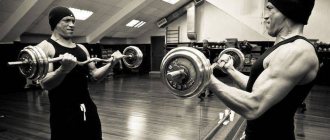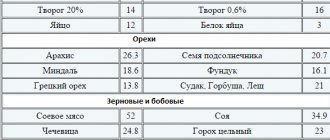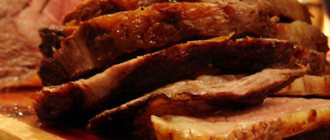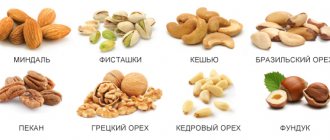1093
Beginning athletes and people trying to lose weight are interested in what to eat after cardio training. Effective weight loss is achieved by using two principles - rational nutrition and physical activity. It is necessary to formulate a daily menu taking into account the characteristics of the training process.
There is an opinion that it is cardio training that promotes active fat burning. There is some truth in this. Indeed, it is during exercise that energy costs increase significantly; the body consumes existing reserves. During strength training, these processes are carried out differently.
Training with additional weight provokes active micro-tearing of muscle fibers, due to which they increase in volume. During the workout itself, virtually no fat is burned, but calorie consumption after strength training continues for several hours. To lose weight, you need to use all possible types of physical activity and constantly alternate them.
This way you achieve several goals at once. The body does not have time to adapt to certain loads, which means it reacts more actively to stress, burning fat. In addition, it is interesting for you to exercise; sports do not turn into a routine.
The issue of nutrition before and after training remains open. Previously, there was an opinion that you should not eat before or after training. They say that if, after training, calories enter the body from the outside, then they are consumed first, and fat remains untouched. Modern research has refuted this opinion. Food before and after training is necessary to maintain the internal balance of vitamins, minerals, and also speed up metabolism. You need to figure out what you can eat after cardio training, after what period of time you can eat, what portions should be.
How is cardio training different from strength training?
Cardio training is an intense, linear exercise that significantly increases your heart rate. Due to this, fat burning occurs. The group of activities includes:
- Running outside or on a treadmill;
- Riding a bicycle or exercise bike;
- Classes on the orbit track;
- Training on a stair walking simulator.
Be sure to read: How to really lose weight in 2 days without harm to your health?
Numerous group fitness trainings, Zumba, and shaping can also be classified as cardio exercises. Fat burning occurs due to increased heart rate. All processes in the body are significantly accelerated; often during exercise, body temperature increases significantly.
When strength training, the emphasis is on measured exercises with additional weight. Weights, dumbbells, and strength training equipment are used. There is an opinion that strength training is created exclusively for bodybuilders, and girls who want to lose weight should use only aerobic types of exercise. In fact, to achieve a positive result, you need to combine different types of activity.
Both cardio and strength training can leave you very tired, but recovery is easier and faster after aerobic exercise. Many athletes note that after strength training, a brutal appetite awakens in them. The body needs an influx of energy and materials to form muscle mass. After cardio training, when the heartbeat gradually returns, the athlete does not feel so hungry, but this does not mean that he does not need food.
Features of nutrition during cardio exercise
Cardio training is a structured exercise program for weight loss that is designed to be performed for a long time without stopping. Very often in the literature, cardio training is compared with gymnastics and aerobics. But the difference between cardio is that it uses the energy that is produced due to the oxidation of glucose molecules with oxygen.
The exercises are based on continuous movements that stimulate the production of growth hormone. To begin such intense exercise, you first need to study all the contraindications, since training has a strong impact on the cardiovascular system. After following such a weight loss program, the body will quickly begin to lose weight.
Examples of cardio exercises are running, race walking, exercise on an exercise bike, and competitive swimming. All these sports actively involve all parts of the body and help you quickly lose weight and tone your body. The programs are recommended for people prone to cardiovascular diseases. After endurance training, both physical and spiritual condition improves.
Benefits of cardio training for weight loss:
- strengthening the immune system;
- rapid fat burning;
- strengthening blood vessels, veins and arteries of the heart;
- gradual weight loss.
Considering the effect of cardio on the body, nutrition after exercise should provide a certain effect. After cardio training, the body needs:
- leave a low insulin level (it is insulin that is responsible for the formation and deposition of fat in the body. In order for the weight loss process to begin, the insulin level must be reduced to a minimum);
- increase in growth hormone (necessary for rapid breakdown of fat);
- maintaining good levels of all body chemicals.
In order for all of these goals to be achieved, it is necessary to adhere to proper nutrition. After exercise, the level of insulin in the blood becomes very high, which increases the risk of not losing, but, on the contrary, increasing weight.
If you consume heavy carbohydrates after exercise, your blood insulin will rise sharply. The level of growth hormone will decrease and, therefore, the body fat will not become smaller. Therefore, it is recommended not to consume carbohydrates after training for weight loss or to reduce their amount to a minimum.
The optimal diet can be considered: a vegetable mix with chicken breast or a protein shake. All components of the products will be aimed at strengthening and restoring muscle mass after heavy physical activity.
Benefits of a low-carb diet:
- it does not replenish glycogen reserves (this means that the level of glucose in the body does not increase. Metabolism improves, the body remains full longer);
- the protein will begin to partially convert into glucose, but will not raise insulin (due to which the body will continue to burn fat).
Who is cardio training recommended for?
Cardio training is not only necessary for weight loss. They have a positive effect on the functioning of the cardiovascular system. By regularly exercising on cardio equipment, you naturally normalize blood pressure, strengthen blood vessels, and reduce the likelihood of stroke, heart attack and other dangerous conditions. To achieve this effect, you need to exercise under the supervision of a trainer and always listen to his recommendations.
If you have any chronic diseases, you must first consult with your doctor and obtain his permission.
When losing weight, cardio training is effective if you exercise regularly and constantly increase the load. The safest exercises are on the orbit track. This simulator is for rehabilitation. During such a workout, the knee and hip joints do not experience excessive stress, as when running or cycling. You need to start the training process with 10 minutes of active walking. Each subsequent workout should be increased by 5-10 minutes. The speed of movement is also gradually increasing.
If you combine cardio and strength training for weight loss, then the session always begins with a warm-up; you need to warm up the ligaments and joints. Then follows 10 minutes of active cardio, after which you perform a strength complex, and finish it with another 10 minutes of cardio.
Be sure to read: How long do you need to diet to lose weight to your desired weight?
You can quickly lose weight with the help of interval training, when strength and cardio complexes are constantly alternating during one session.
In this way, exercises with additional weight are also performed when the heart rate increases. To use this technique, good physical training and the absence of contraindications are required.
Some types of cardio training to burn fat
Safety and simplicity are the hallmarks of steady-state, or sustained, cardio training. This means that the load remains the same throughout the entire workout and there are no breaks. For example, you need to run continuously for 20-30 minutes, or an hour, on the street or on a treadmill, at a speed of about 7 km/h - suitable for any fitness level.
If cardio loads alternate, the training is called cross-training: this style is good because it eliminates monotony and prevents boredom. For half an hour of training, you can alternately exercise for 10 minutes on a treadmill, elliptical and bicycle trainers. In the warm season, indoor training can be easily replaced by running and swimming - it’s good when there is a natural body of water nearby; In winter, you can ski, skate, sled, or just play snowballs, walk on rough terrain, etc.
Photo: Cardio training to burn fat
Interval training is also suitable for any level of fitness - with varying intensity of loads. Using running as an example: you can run for 2 minutes at a speed of 8 km/h, and then for 3 minutes at a speed of 5 km/h - this is the pace of a normal fast walk, and during this time your pulse and breathing have time to recover. The intensity of the load must be alternated throughout the entire workout - usually up to 40 minutes, but for poorly trained people it is better to start with 15-20 minutes.
A super scheme is a set of certain types of exercises that alternate in the optimal sequence - here everyone adapts “at random”, trying one thing or another. For example, 3 minutes of treadmill running, 1 minute of squats, 3 minutes of elliptical trainer, 1 minute of push-ups, and all over again. Many trainers call this method the most effective for burning fat, and it is suitable for both professional athletes, beginners, and just amateurs: in a short time, subcutaneous fat is destroyed, but at the same time muscle mass is formed - this eliminates such an unpleasant side effect of losing weight as sagging skin .
What is the best type of cardio training for burning fat?
Of course, the one that gives you more joy and pleasure. When exercises are performed according to the “this is how it should be” principle, they rarely give results above average: simply because in our lives we are already guided by this principle too often, and we rarely relax and have fun.
If you include all these types of cardio training in your weight loss program every week, alternating them, you will not get tired of doing it. You can also connect your favorite sport: maybe you like tennis, volleyball or cycling - all this gives you the opportunity not only to relax and avoid stress, but also to spend time with your loved ones, family and friends.
Is it possible to do cardio training on an empty stomach?
We have already figured out what cardio training is and what rules it is carried out according to. Now you need to figure out how to eat before class. There is a widespread belief on the Internet that you don’t need to eat at all before training, and aerobic exercise is best done in the morning on an empty stomach. This option is the norm for trained athletes.
If you have just recently started losing weight, then such a strict regime is not suitable for you. In the morning the body has not yet woken up. If you immediately run to the park or get on the exercise bike, this will be a huge stress on all systems and functions. the next day you will wake up in a broken state.
Beginning athletes are recommended to train at any time convenient for them. You must have the strength to study.
If you run or bike on an empty stomach, you are more likely to experience nausea, dizziness, or fainting during exercise.
Should you include this kind of cardio in your training program?
This directly depends on the purpose of the training. For example, if the goal is only to lose weight, then training will be quite appropriate. During physical activity, the source of energy is carbohydrates accumulated in the body. In the morning, glycogen levels are minimal, so the body begins to burn fat during training. On the other hand, fat is the last thing the body breaks down. In the beginning, protein will be wasted as energy, i.e. muscle. Accordingly, fasted cardio promotes the loss of not only fat, but also muscle, which is not suitable for people who, in addition to losing weight, want to gain a toned body.
“Hungry” cardio is also not suitable for people who, in addition to morning classes, are planning an evening workout. In this case, it is better to have breakfast in the morning - the effect of losing weight will be greater, and the load on the body will be more gentle.
Each person can decide for himself whether such training is suitable for him or not. Only an experimental path will help you make the right choice.
Try not to eat before training or, conversely, eat only proteins or carbohydrates and compare the results. The option to which the body responds better and will be optimal, even if it is not suitable for another person.
Secrets of pre-workout nutrition
There is no need to eat immediately before class, because feeling a full stomach does not contribute to an effective workout. You should eat 1.5-2 hours before class. Food should be light. It could be protein or long carbohydrates. A portion of oatmeal steamed in kefir or sourdough with berries or fruits is ideal for such purposes. You will saturate your body with energy and feel a huge surge of strength for new achievements.
Immediately before training, you can take an amino acid complex for athletes or L-carnitine. This B vitamin-like substance helps transform subcutaneous fat into energy. While not a fat burner in its pure form, this drug performs its functions.
Be sure to read: Useful information for losing weight about protein foods
Recommended heart rate for cardio training
Cardio exercise can be low, medium or high intensity. They are calculated using the formula “two hundred twenty minus real age, equals maximum heart rate.” For example, the maximum heart rate of a thirty-year-old person is one hundred and ninety beats per minute. Low-intensity physical activity that causes your heart to beat faster should be within sixty-five percent of this value. For example, for a thirty-year-old girl this should be around one hundred and twenty-four beats per minute. This value is achieved by simple walking and is indicated for people with limited physical capabilities, as well as beginners in sports.
At the same time, proper nutrition is also necessary during cardio training, which should include the necessary set of products containing proteins that restore muscle mass and carbohydrates that supply the body with vital energy. The average intensity of exercise causes the pulse to become more frequent and is approximately seventy percent of the indicated value. For a thirty-year-old guy, it will be within one hundred and thirty-three beats per minute.
A similar heart rate is achieved during steady running, when a person is already sweating, but can still breathe evenly. At high intensity, the heart rate is considered normal if it reaches eighty-five percent of maximum. So for a girl it should be no more than one hundred and sixty-one beats per minute.
Is it possible to eat during training?
In the gym, you can often see athletes drinking protein shakes from their own shakers during class. This nutrition option is only suitable for professional athletes during strength training, when they are preparing for performances and competitions.
During cardio training, you should not use protein drinks or bars, but you should definitely drink water.
On cardio equipment, you sweat a lot, and a water-salt imbalance occurs, which can lead to dehydration. During an hour-long workout, it is advisable to drink a liter of still water.
Fasted cardio as part of a training program
- upon reaching a “plateau” - a reduced rate of burning fat deposits against the backdrop of the body’s adaptation to changes in diet and exercise;
- after a complete restructuring and adaptation to a sports program that has already been used for a long time.
It is recommended to resort to “fasted” cardio on a temporary basis with certain breaks. Regular exercise will lead to the body adapting to this regime. The main thing to remember is that muscle loss is inevitable, and in some cases, depending on individual characteristics, lethargy and fatigue may occur.
What to eat after training
You don't need to eat anything immediately after cardio training, although you won't feel like it. The first meal is acceptable 30-45 minutes after class. You can drink a whey protein shake or eat a steamed omelette made from three egg whites without yolks. In this way, you will continue to fight fat, but maintain the existing muscle mass.
The body uses energy for several hours after training, but if you do not provide an influx of protein from the outside, destructive processes in muscle fibers will begin. You will lose weight, but your body will become flabby and saggy. In the jargon of professional athletes there is a name for such people - skinny fat or fat skinny. Under clothes, such flaws are almost invisible, but on the beach you can often see thin girls with far from ideal bodies.
If you want to have a beautiful figure with sculpted shapes, you should reconsider your diet after cardio training. There is no need to starve; a portion of protein 45 minutes after the end of class is required. After another 45 minutes, you can eat a portion of fiber and protein, for example, a vegetable salad with baked chicken breast.
Sweet carbonated drinks, fast food, smoked meats, canned food, snacks, fatty, salty foods, sweets, and baked goods are strictly prohibited. By consuming such foods, you will never be able to lose weight.
Cardio training is an effective way to combat excess weight, but it needs to be combined with a properly balanced diet, then the results will not be long in coming.
To have breakfast or not after fasted cardio
A common mistake made by those practicing this type of training is to completely skip the morning meal. Many people believe that if you don't eat before lunch, the effect you get from fasted cardio will increase. This approach is fundamentally wrong.
The lack of food in the first half of the day serves as a signal to the body for an upcoming hunger strike. It triggers the mechanism of fat accumulation. Consequently, muscle mass is lost, and the energy received from subsequent meals is instantly deposited in the fat layer.
A carbohydrate breakfast after cardio training allows you to avoid this. This type of eating not only blocks the fat storage program, but also significantly reduces the loss of muscle mass. But even taking such measures, you should not perceive this type of physical activity as a full-fledged fat burning training.
To start the process of burning fat, it is not enough just to do cardio training, you also need to reduce the number of calories you consume. If the calorie content of the daily diet remains high, even the most intense workouts will not be able to compensate for the excess energy entering the body with food, and the result will be practically zero.











